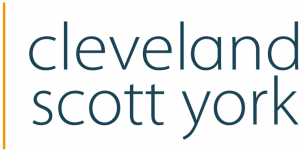An essential part of working as a trade mark attorney is an understanding of what you will be working with and why this work is valuable to brands, businesses and individuals. Therefore, your first question should be, “what is a trade mark”? The answer is a form of intellectual property used by businesses to help make their brand easily identifiable to consumers as well as distinguish themselves from third parties. Harry Rowe, an Associate and Chartered Trade Mark Attorney with Mathys and Squire, explains: “a trade mark can take a number of forms, including words, logos or more unconventional indicators…such as smells, sounds or even multimedia marks”. In short, anything a brand can use to identify and differentiate their goods or services can be used as a trade mark. Most businesses will use some sort of trade mark, so anyone entering the sector can expect a varied role and workload.
There are two types of trade mark rights in the UK. First there are unregistered rights, which are acquired through use; these rights are also known as common law passing off rights. Second, there are registered rights, which are acquired by filing an application at the UK Intellectual Property Office (UK IPO). These two rights can exist simultaneously.
Successful businesses spend time and money developing and marketing their products or services. Companies need the public to recognise that product or service as theirs and theirs alone to build a strong reputation and hopefully positive association through their chosen mark. Trade marks are an important element when identifying a particular company’s products or services – and building goodwill and loyalty among customers as well as retaining their business.
A trade mark can only be registered if it is inherently registrable. This means it must be distinctive for the goods and services in relation to which it will be used. Trade marks which, for example, describe a characteristic of the relevant goods or services are unregistrable. The UK IPO carries out an assessment of the inherent registrability of a mark when an application is filed and can raise an objection if it finds that the trade mark does not meet the criteria for registrability.
Registering a trade mark gains exclusive rights and prevents others from using a similar mark in relation to similar goods and services.
Trade mark rights are infringed when a third party uses an identical or similar mark in relation to identical or similar goods or services. In some circumstances infringement can occur in relation to dissimilar goods or services. Infringement can occur unintentionally when a third party innocently adopts a mark that is too close, although this sort of unintentional use is not a defence to infringement. Infringement can also be intentional, for example, supermarket look-a-likes where supermarkets create packaging which is similar to a famous brand. There is also a huge market in counterfeit goods; this is where counterfeiters copy famous brands.
The longer a trade mark is used to identify goods and services, the stronger and more valuable a brand can become so it is important to get the concept right from the beginning. In some cases, trade marks are the most valuable assets of a business. Famous trade marks such as those owned by Apple, Google and Coca-Cola are instantly recognisable on a worldwide scale because they have become completely synonymous with the brands.
In the UK, trade marks are registered on a first to file basis. Therefore, until a mark is registered it would be necessary to rely on unregistered rights and goodwill. Therefore, it is important to seek the registration of trade marks as part of a product or service launch, preferably as soon as possible during that process. It is crucial to register and use a trade mark correctly, to enable it to become a key intellectual property asset.
Click here to find out more about working as a Chartered Trade Mark Attorney.






